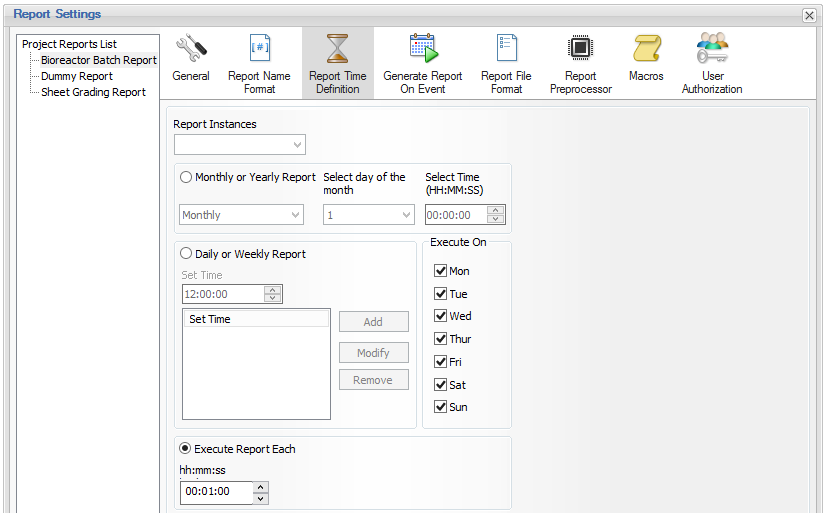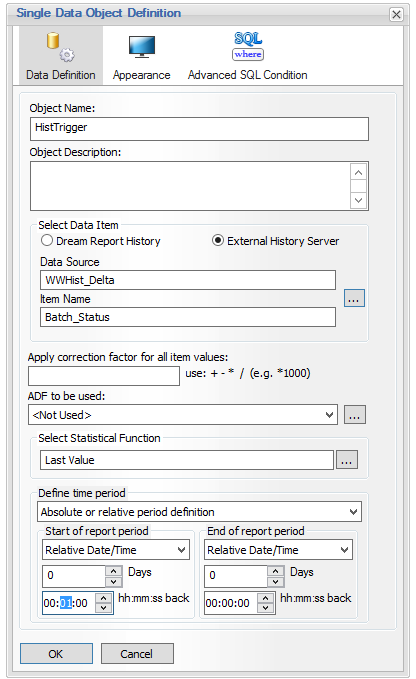...
- Create a “dummy” report that will be auto-generated periodically (e.g. every minute):
- On this report, place a Single Data Object that will use the “Last Value” statistical function of the “trigger” tag from Historian (e.g., a “BatchStatus”, “CriticalEvent”, etc. tag). That tag will be exposed through the Wonderware Historian historical values driver, just as you would when reporting on any tag in Wonderware Historian. For example:
- The “real” or actual report should be triggered by the value of the object in the dummy report, exposed through the Analytical driver. On the actual report to be event-triggered:
- In order to avoid creating multiple PDF files of the “dummy” report, set the report file name to be static (remove the timestamp part), so every new file will overwrite the previous one
- Also, you can set the “dummy” report to not appear in the list of available reports at runtime, even though the report is scheduled to run every minute:
Related articles
| Filter by label (Content by label) | ||||||||||||||||||
|---|---|---|---|---|---|---|---|---|---|---|---|---|---|---|---|---|---|---|
|
...




